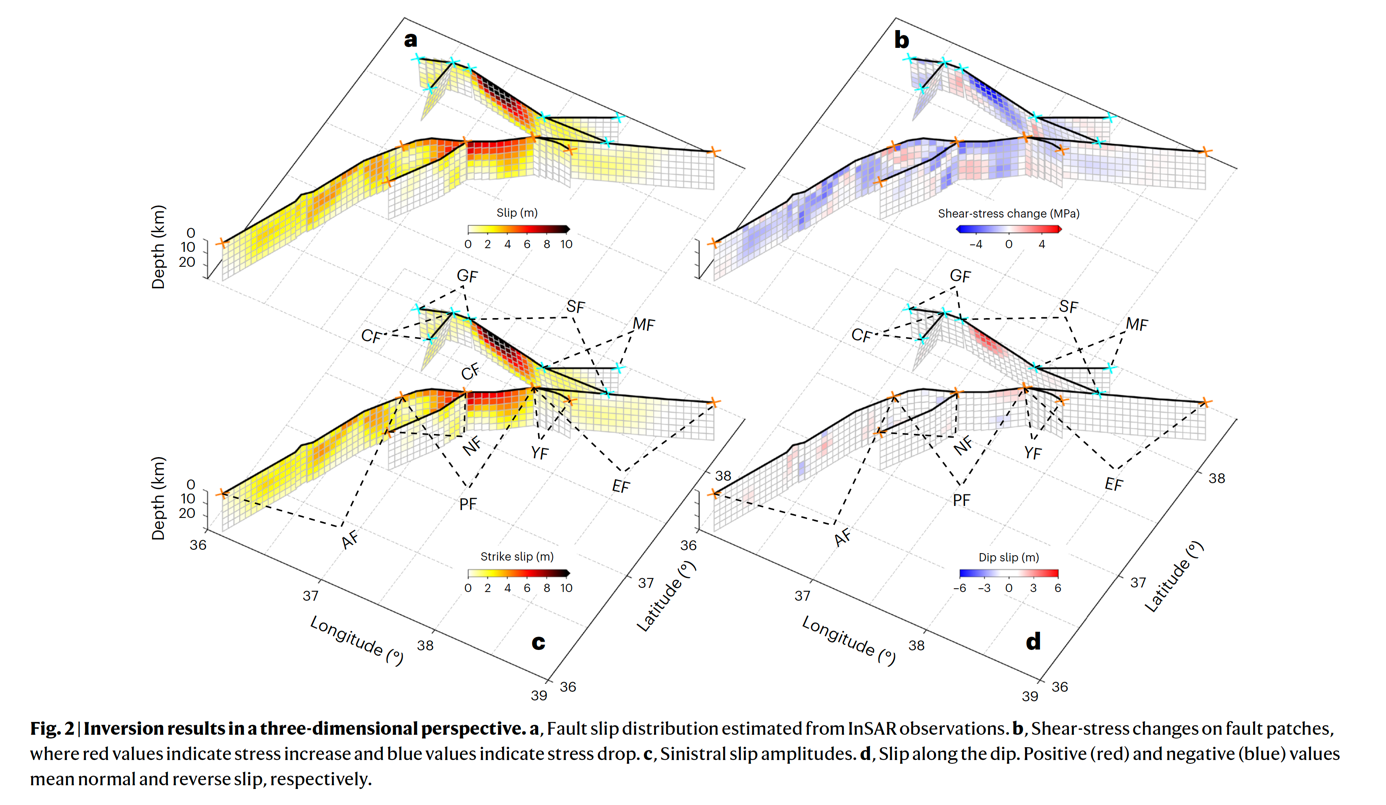by
Devrim Başar Han | Eki 16, 2023
Fakültemiz Jeofizik Mühendisliği Öğretim Üyelerinden Prof. Dr. Tuncay Taymaz ve Doç. Dr. Tuna Eken'in 6 Şubat 2023 tarihinde Güneydoğu Bölgesinde meydana gelen depremler ile ilgili makalesi Nature Geoscience adlı dergide yayınlanmıştır.
Makale adı: Geometric controls on cascading rupture of the 2023 Kahramanmaraş earthquake doublet Türkiye
Yazarlar: Yijun Zhang, Xiongwei Tang, Dechuan Liu, Tuncay Taymaz, Tuna Eken, Rumeng Guo, Yong Zheng, Jingqi Wang & Heping Sun
Özet:
How fault geometry controls the rupture propagation and segmentation of a strike-slip event is an open question. Deciphering the relationship between the geometric fault complexity and seismic kinematics is essential for both understanding the seismic hazard posed by a particular fault and gaining insights into the fundamental mechanics of earthquake rupture. Here we integrate the finite-fault inversion of synthetic aperture radar observations and back projection of high-frequency teleseismic array waveforms to investigate the rupture geometry of the 2023 Mw 7.8 and Mw 7.6 Kahramanmaraş (southeastern Turkey) earthquake doublet and its impact on the kinematics and slip distribution. We find that large slip asperities are separated by fault bends, whereas intense high-frequency (~1 Hz) sources occur near the branching junctions, suggesting that geometric barriers could decelerate rupture propagation and enhance high-frequency wave radiations. In addition, supershear rupture propagating along the relatively high-velocity material is prone to occur on geometrically simple and smooth faults with relatively few aftershocks. These kinematic characteristics highlight that the geometric complexity of the fault system may be a key factor in the irregular cascading rupture process.
Makaleye ulaşmak için tıklayınız.
